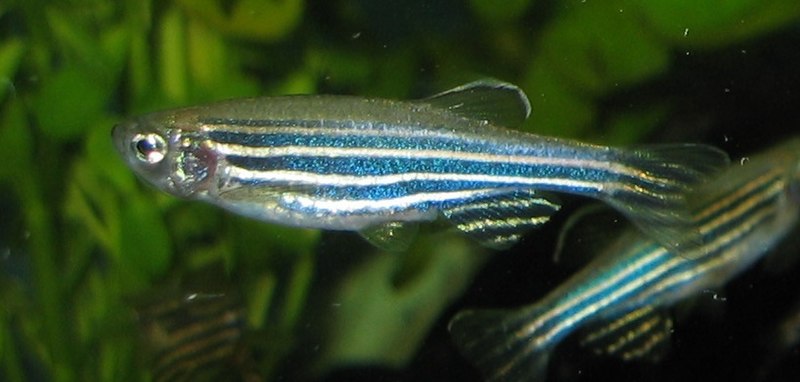Tag Archives: mitochondrial
New genus created in danioninae revision
A study of the molecular phylogenetic interrelationships of south Asian cyprinid genera Danio, Devario and Microrasbora has resulted in a reclassification of the group and the creation of a new genus: Microdevario.
The study, which has been published in a recent issue of the journal Zoologica Scripta, was carried out by Fang Fang and his colleges at the Swedish Museum of Natural History.
The researchers examined the molecular phylogeny of the Danioninae using fragments of the mitochondrial cytochrome b and nuclear rhodopsin genes from 68 species, including 43 danioinine species.
The analysis revealed the species Microrasbora rubescens and the genera Chela, Laubuca, Devario, and Inlecypris to form a natural group, the Devario clade, with the species Microrasbora gatesi, Microrasbora kubotai and Microrasbora nana being in sister group position to the rest.
Zebrafish
These findings, in combination with subsequent analysis of morphological characters, have made the authors propose four taxonomic changes:
· The species Inlecypris auropurpurea is reassigned as Devario auropurpureus.
· Microrasbora gatesi, Microrasbora kubotai and Microrasbora nana are reassigned to a new genus named Microdevario. Fish of this genus are distinguished from other danioinines by a combination of skull and jaw characters.
· Reassignment of the species Celestichthys margaritatus to the genus Danio in previous studies is confirmed.
· The membership of Chela is restricted to Chela cachius. All other species previously placed in this genus are reassigned to the genus Laubuca, except Chela maassi, which is in the genus Malayochela.
For more information about the study and the suggested taxonomic changes, see the paper Fang, F, M Norén, TY Liao, M Källersjö and SO Kullander (2009) Molecular phylogenetic interrelationships of the south Asian cyprinid genera Danio, Devario and Microrasbora (Teleostei, Cyprinidae, Danioninae). Zoologica Scripta 38, pp. 237–256.
Squeaker catfish evolved from single ancestor
The members of the genus Synodontis, commonly known as the squeaker catfishes of Lake Tanganyika, evolved from a single common ancestor according to a paper* published in a recent issue of the Journal of Evolutionary Biology.
synodontis catfish
Researchers Day, Bills and Friel** analysed 1697 base-pair sequences consisting of nuclear (ribosomal protein-codin gene S7), mitochondrial (cytochrome b) and transfer RNA gene fragments in 65 samples (representing about 40 species) of squeaker catfishes to study the evolutionary relationships of the group.
Through their research, the authors were able to track down a single origin for the Lake Tanganyika species flock. The members of the genus Synodontis all evolved within the last 5.5 million years which makes them a comparatively new addition to this Great Rift Valley Lake which is believed to be at least 9 million, perhaps even 12 million, years old.
Day, Bills and Friel also recovered a monophyletic group of southern African riverine species which seems to have diversified very rapidly (during the last 890,000 years). This group was believed to have been formed due to adaptive radiation within Lake Makgadikgadi; a lake which is now extinct.
* Day, JJ, R Bills & JP Friel (2009) Lacustrine radiations in African Synodontis catfish. Journal of Evolutionary Biology 22, pp. 805–817.
**Julia Day, Roger Bills and John Friel

